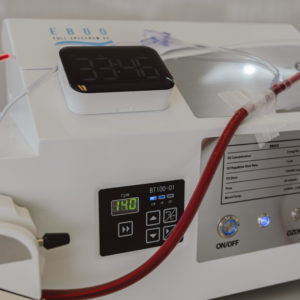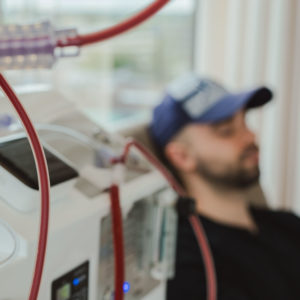
5 min|Dr. Jam Caleda
Feeling Extreme Fatigue? These Dietary Factors May Be The Reason
Wellness, NutritionUnraveling Unexplained Fatigue
Fatigue is a common complaint that we, Naturopathic Doctors, hear at the office. This subtle yet pervasive symptom emerges from diverse causes that keeps life in stagnation and, for some, relentless exhaustion. While treating underlying disorders can alleviate the burden, the enigma of unexplained fatigue often lingers, defying diagnosis. Conventional medicine often falls short in addressing this complex puzzle.
Enter nutritional medicine, a beacon of hope for those grappling with unexplained fatigue. Evidence from systematic reviews underscores its efficacy, revealing that around 70-80% of individuals experience noteworthy relief through tailored nutritional interventions¹⁻³. In this article, we embark on a journey to uncover the dietary elements that frequently underlie unexplained fatigue.
Reactive Hypoglycemia
Reactive hypoglycemia is one of the most common factors that contribute to unexplained fatigue⁴⁻⁵. This condition is characterized by the body’s reaction to a spike in blood sugar. When we consume glucose (sugar), it is absorbed in our gut into the blood stream, where our body uses insulin to stabilize the levels in our blood. Insulin does this by moving the glucose into our cells where it can be used for metabolism.In a normal body, both insulin and blood sugar levels stay fairly stable, even after a high sugar meal.However in reactive hypoglycemia, which is the early stages of diabetes, this cycle becomes aberrant. In reactive hypoglycemia when we eat a high sugar meal, our blood sugar spikes very high. Subsequently our insulin levels spike as well, and they rush to reduce the blood sugar levels, so much so that they drop our blood sugar to amounts so low that we experience severe bouts of fatigue after the meal.
This process can precipitate over time until our blood sugar and insulin levels yoyo throughout the day even when we don’t eat high sugar meals. The result is an underlying symptom of fatigue. Things that precipitate reactive hypoglycemia include stress, anxiety, hormonal imbalances, and a lack of exercise.
A Naturopathic Approach
In my experience, a program that includes the avoidance of refined sugar and refined carbohydrates is paramount. This is supported through the consumption of small, frequent meals and supplements to help stabilize the blood sugar levels.Food Sensitivities
Food sensitivities are another catalyst for unexplained fatigue. Numerous studies have reported that food sensitivities impacts our energy both in children and adults⁶⁻⁸.Allergic fatigue may be associated with other symptoms of allergy such as:
- Skin conditions
- Nasal congestion
- Abdominal pain
- Headaches
- Joint pain
- Irritability
- and more
A Naturopathic Approach
The first would be a blood spot test, where a sample of blood is cross-referenced with different common foods and analyzed for allergic markers. Here at Integrative, we can also use a Biomeridian Food Sensitivity Test, which accesses the meridian channels in the body to determine common food sensitivities.The gold standard for determining sensitivity is an Elimination Diet. This involves abstaining from most foods for a period of 3-6 weeks, then slowly reintroducing foods and determining which ones are causing the allergic symptoms.
Caffeine
Caffeine is a silent culprit. While celebrated for its energy-boosting prowess, caffeine often slyly contributes to fatigue. In published case reports, 6 individuals with severe sleepiness experienced a significant improvement after they ceased caffeine consumption.It is suggested that caffeine interferes with sleep cycles and triggers reactive hypoglycemia. These factors, while occasionally compounded by organic disorders, often elude diagnosis, leaving countless sufferers in the shadows.
A Naturopathic Approach
For these individuals without overt diseases, understanding these 3 dietary factors can be transformative. Research has shown that prescribed nutritional supplements such as potassium, iron, multivitamins, amino acids, and IV therapies can be helpful as well.Ultimately, food becomes our ally in the journey to wellness
Conclusion: The Path to Renewed Vitality
By making conscious choices, embracing balanced nutrition, and understanding your body's unique signals, you take charge of your vitality.Remember, your journey to vibrant health is an ongoing endeavor. Consult with healthcare professionals and explore the power of personalized nutrition. As you embark on this transformative quest, may your days be energized, your spirit renewed, and your life enriched by the harmony of holistic well-being.
Resources
1. Werbach, Melvyn R. “Nutritional strategies for treating chronic fatigue syndrome.” Alternative Medicine Review2 (2000): 93-108.2. Chambers, Duncan, et al. “Interventions for the treatment, management and rehabilitation of patients with chronic fatigue syndrome/myalgic encephalomyelitis: an updated systematic review.” Journal of the Royal Society of Medicine10 (2006): 506-520.
3. Alraek, Terje, et al. “Complementary and alternative medicine for patients with chronic fatigue syndrome: a systematic review.” BMC complementary and alternative medicine1 (2011): 1.
4. Karlan, Samuel C., and Clarence Cohn. “Hypoglycemic fatigue.” Journal of the American Medical Association9 (1946): 553-555.
5. Portis, Sidney A. “Life situations, emotions and hyperinsulinism.” Journal of the American Medical Association16 (1950): 1281-1286.
6. Rowe, A. H. “Allergic fatigue and toxemia.” Annals of allergy1 (1959): 9.
7. Speer, Frederic. “The allergic tension-fatigue syndrome in children.” International Archives of Allergy and Immunology3-4 (1958): 207-214.
8. Randolph, Theron G. “Allergy as a causative factor of fatigue, irritability, and behavior problems of children.” The Journal of pediatrics5 (1947): 560-572.
9. Roehrs, Timothy, and Thomas Roth. “Caffeine: sleep and daytime sleepiness.” Sleep medicine reviews2 (2008): 153-162.
10. Regestein, Quentin R. “Pathologic sleepiness induced by caffeine.” The American journal of medicine5 (1989): 586-588.
Related Articles

5 min|Dr. Alex Chan
EBOO for Chronic Inflammation: A Natural Approach for Systemic Relief
Regenerative Medicine, EBOO Therapy
5 min|Dr. Alex Chan
EBOO Therapy for Autoimmune Conditions: Exploring the Potential Benefits
Autoimmune Disease, Regenerative Medicine, EBOO Therapy



